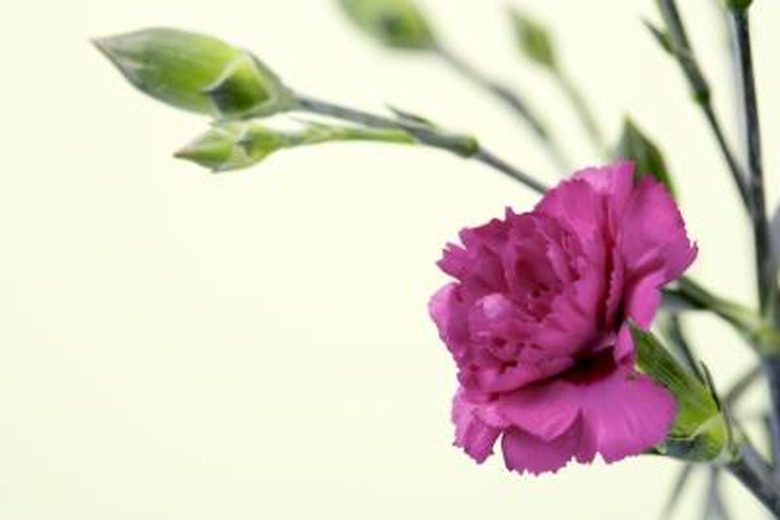How To Grow Carnations From Cuttings
Things Needed
- Garden shears
- 4-inch planting container
- Horticultural sand
- Rooting hormone
- Hand shovel
- Garden hose or watering can
- High-phosphorus fertilizer
Tip
Spread 3 inches of composted pine bark or sphagnum peat moss on the surface of the soil around your carnations. The layer of mulch helps the soil conserve moisture and makes it more difficult for weeds to grow in your garden bed.
Warning
Carnations may sustain damage from pests such as spider mites, thrips and aphids. Use a garden insecticide to treat severe infestations.
Carnations, known botanically as Dianthus caryophyllus, are herbaceous perennial plants with sweetly scented, ruffled blossoms. Carnations bloom from late spring through summer in a multitude of attractive colors including white, pink red, yellow and lavender. These handsome garden favorites may be propagated by seeds or rooted cuttings. Carnations perform best in U.S. Department of Agriculture plant hardiness zones 4 through 9, where they may be grown from cuttings with little difficulty.
Step 1
Take a 4- to 6-inch cutting from a healthy carnation plant using sharpened and sterilized garden shears. For best results, make a clean cut at a 45-degree angle. Remove all of the leaves from the bottom half of the cutting.
Step 2
Dust the cut end of the carnation cutting with a rooting hormone powder; obtain rooting hormone from your local garden center or nursery. Insert the bottom 1 to 1-1/2 inches of the cutting into a 4-inch planting container filled with moist horticultural sand.
Step 3
Place the planting container in a location that receives plenty of bright, indirect sunlight. Keep the temperature of the room between 70 and 75 degrees Fahrenheit to encourage the cutting to root. Water the sand, as necessary, to keep it lightly moistened.
Step 4
Wait three to four weeks for the cutting to form healthy roots. Transplant the rooted cutting to a well-drained site in your garden or home landscape that receives a minimum of six hours of direct sunlight per day.
Step 5
Irrigate your carnations with up to 1 inch of water immediately after planting. Allow the top 1 inch of soil to dry to the touch between each subsequent irrigation. Cease supplemental irrigation in the fall and resume your regular watering schedule in the early spring.
Step 6
Apply an application of a high-phosphorus, "bloom booster" fertilizer in the early spring to stimulate the plant's blooming cycle. Follow the use instructions on the fertilizer packaging.
References
- "The Essential Garden"; Liz Dobbs; 2002
